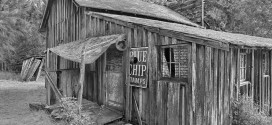It’s official! All but four percent of the nation’s counties are better off today than they were during the foreclosure floods of four years ago, but only 8 percent of county housing markets are better off than they were eight years ago in 2006 before the housing price bubble burst, according to a new analysis by RealtyTrac.
The analysis also found that 80 percent of the county housing markets were better off than two years ago in 2012, when median home prices hit bottom, and 30 percent were better off than six years ago in 2008, at the front-end of the Great Recession.
RealtyTrac looked at four different key categories of housing market health: home price appreciation, affordability, percentage of bank-owned (REO) sales, and the unemployment rate. Each county received a ranking between 1 and 2.5 for each category each year, and those four rankings were summed up for a total index score for a maximum possible score of 10 each year. The 410 counties analyzed in the report account for 63 percent of the U.S. population.
“The housing recovery has taken root in hundreds of counties across the country and almost all local housing markets are better off than they were four years ago when foreclosure activity peaked in 2010, with more than 1 million homes lost to foreclosure in that year alone,” said Daren Blomquist, vice president at RealtyTrac. “We saw less than half that number of bank repossessions nationwide in 2013. Even in hard-hit markets like Stockton, Las Vegas and Lansing, Mich., where REO sales represented more than half of all sales in 2010, the percentage of REO sales has been cut at least in half.”
“Home prices in three-fourths of the counties analyzed are still below 2006 levels, but low inventory has helped home prices accelerate past pre-recession levels in some markets like Seattle, San Francisco, Denver and Oklahoma City,” Blomquist noted. “Those rapid home price gains are causing a concerning drop in affordability rates in some cities, but homebuilders and homeowners with regained equity should help provide more supply to balance out many of those markets in 2014.”
For this analysis RealtyTrac looked at four different key categories of housing market health: home price appreciation over the previous two years; affordability based on a ratio of median incomes to median home prices; percentage of bank-owned (REO) sales; and unemployment rate. Each county was assigned a score between 1 and 10 for each category and the four category scores were summed up for a total housing health index for each year.
• Home price appreciation: percentage change based on median residential property prices in January of each year compared to the median price two years ago.
• Home affordability: median incomes as a percentage of median residential property prices based on annual median household income data from the U.S. Census bureau and median residential property prices from January of each year. Median household income data for 2014 was projected based on trend in previous years.
• Percentage of REO sales: the percentage of all residential property sales that were bank-owned (REO) properties in the 12 months ending in January of each year.
• Unemployment Rate: the average of monthly unemployment rates for each year as reported by the Bureau of Labor Statistics.
 RealEstateEconomyWatch.com Insight and Intelligence on Residential Real Estate
RealEstateEconomyWatch.com Insight and Intelligence on Residential Real Estate

One comment
Pingback: What a Housing Recovery Looks Like | Belair Realty